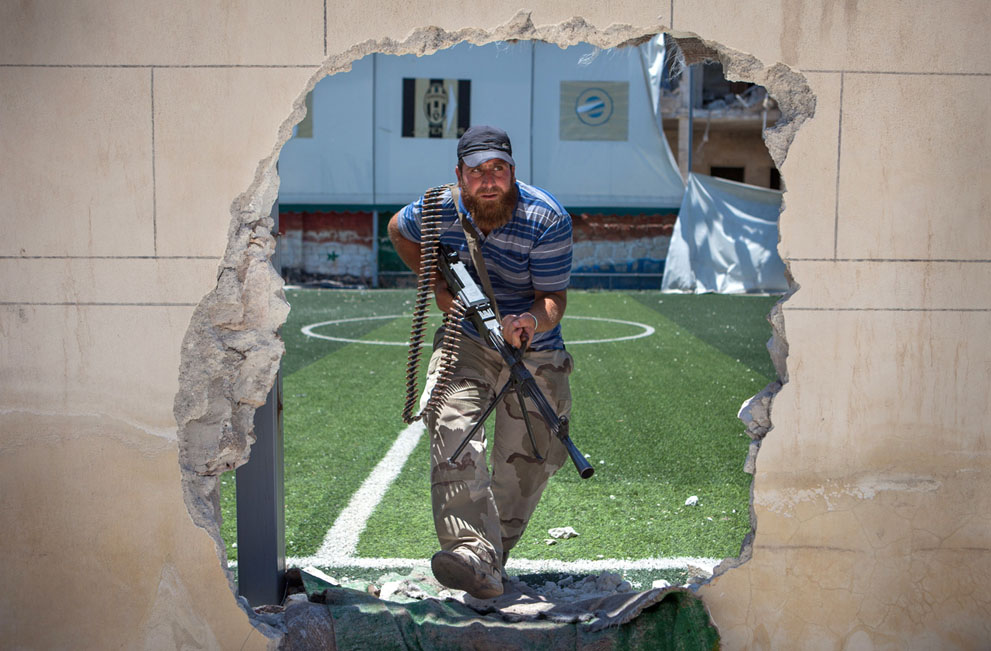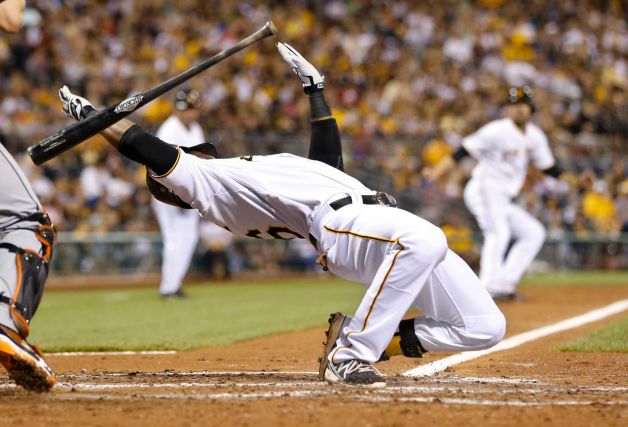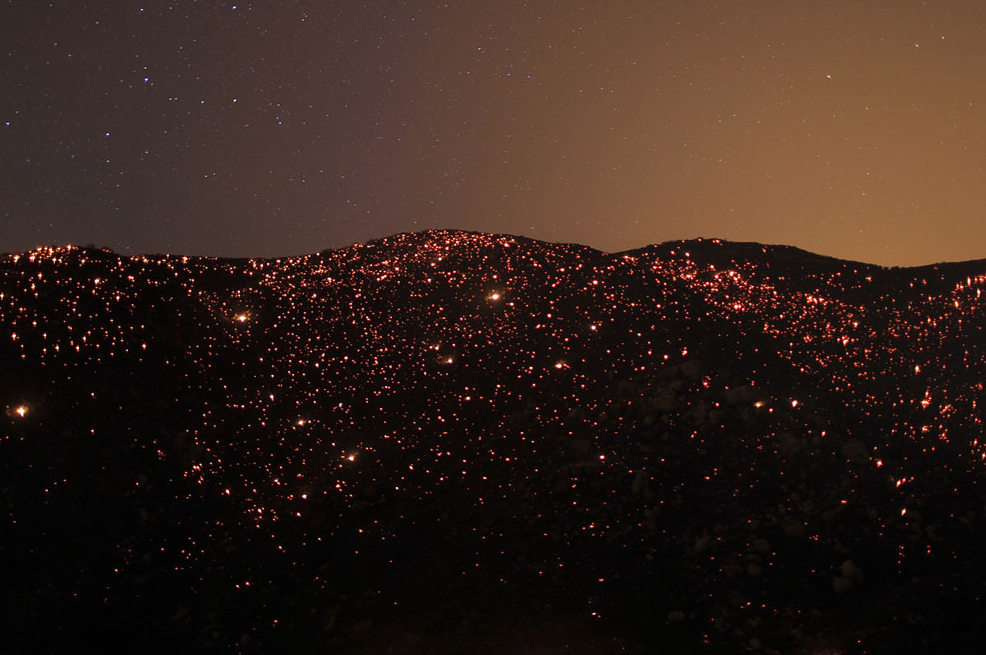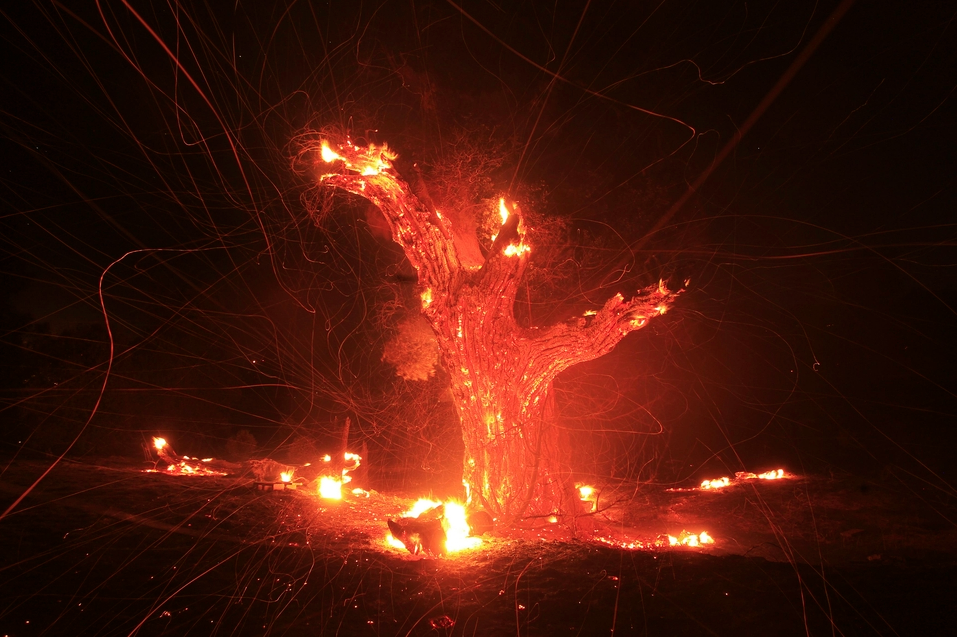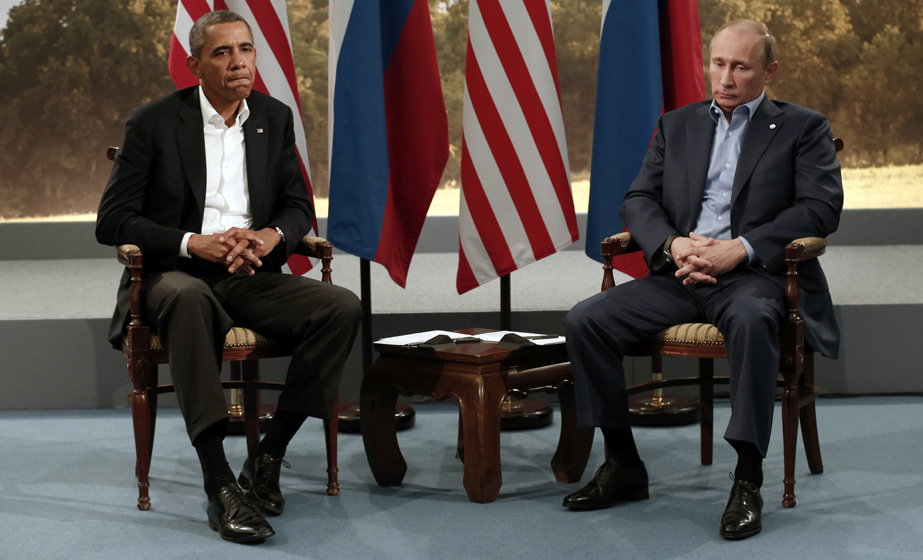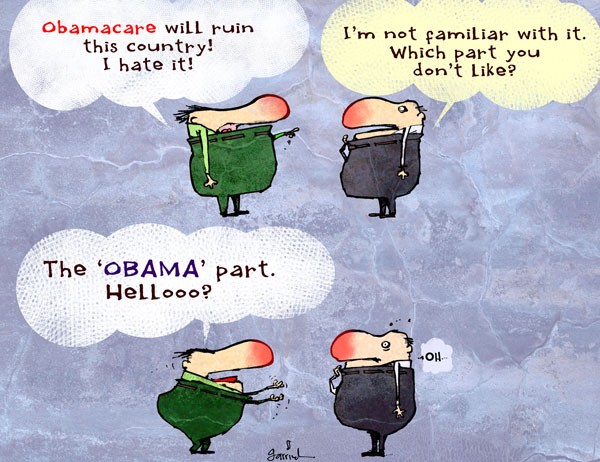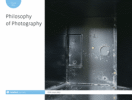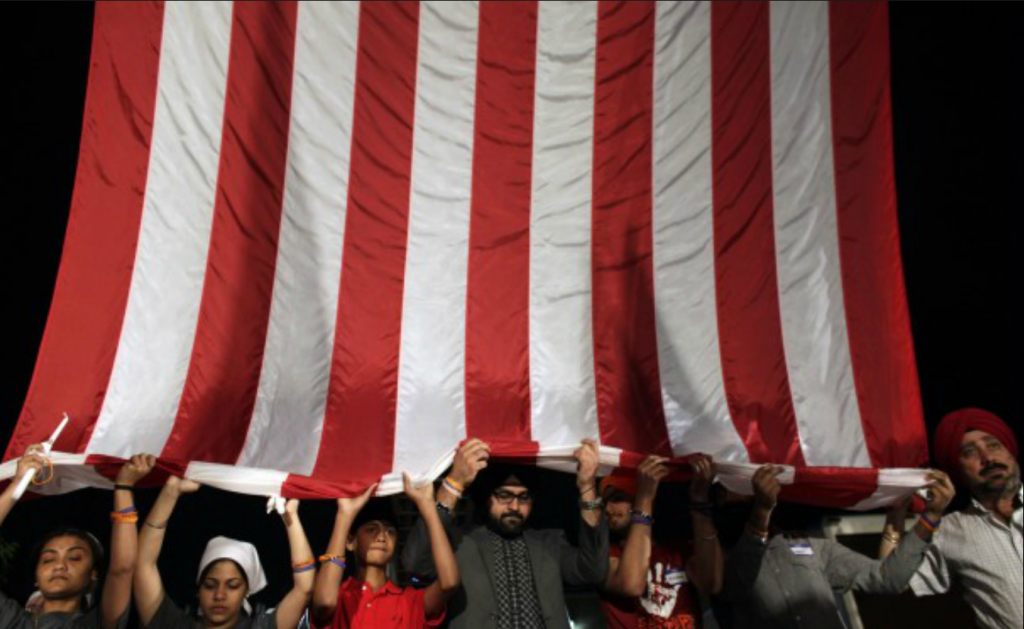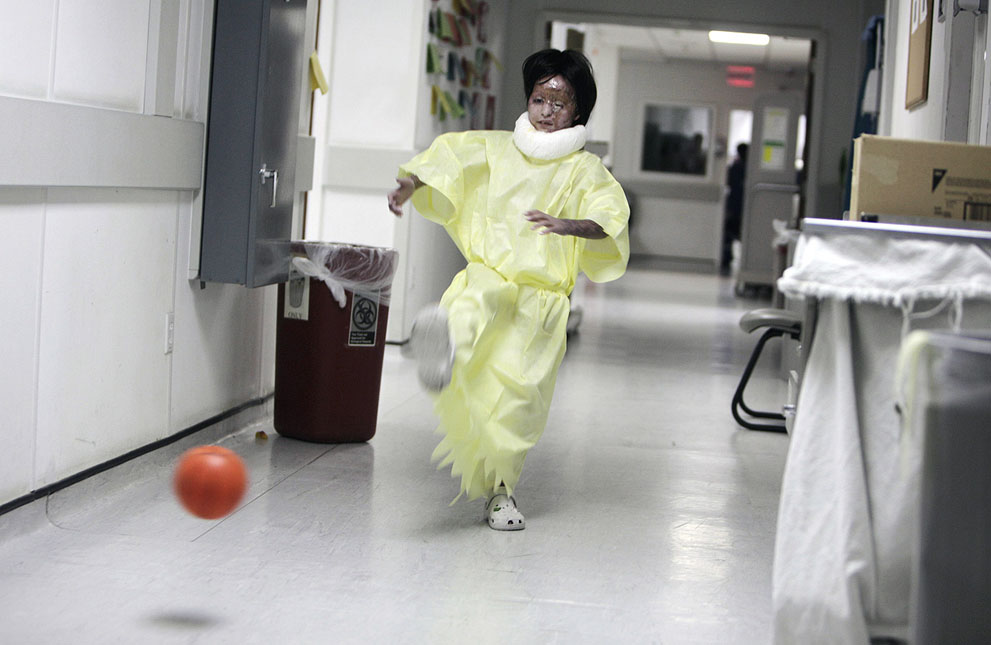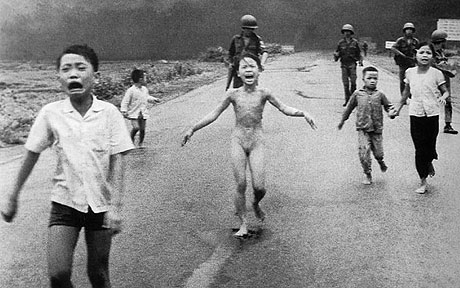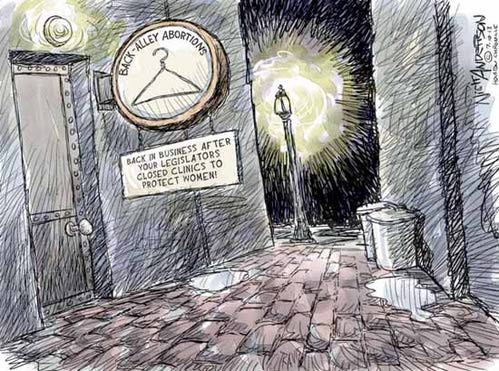If you are having trouble making sense of the carnage that is spreading across Syria, Iraq, Egypt, and other fracturing states in the Middle East and Africa, just take a look at this photograph from Aleppo.
The smooth surfaces, sharp clothing, and crisp visual tonality make it seem like a movie still. The surreal juxtaposition of that killer weapon and the athletic field might suggest a photo taken on a movie set, or one that was Photoshopped. Camouflage pants and a polo shirt are a good combination when every day is casual Friday at the revolution, but even so this guy seems disturbingly out of place.
That may be why the movie allusion comes to mind, as the line between fantasy and reality seems to be evaporating, or as artificial and irrelevant as the chalk line on the turf behind him. The exceptional visual clarity in the visual field enhances this sense of fabricated unreality: it becomes hard to believe that the gun is a real gun, or that he isn’t an actor doing take two. (“OK, this time keep looking wary, but don’t look look at the camera.”) Of course, he is in role but for very deadly effect.
The journalistic context assures us that the scene is real rather than imaginary, while the blast hole in the wall reminds us of the lethal potentiality at hand. Even so, the primary value of the photograph is precisely how it capture’s war’s surrealism. And unlike the artistic scrambling of texts and images, war’s destruction of ordinary conventions such as games and walls is regressive. Instead of challenging a society to grow, it destroys the fictions and arbitrary distinctions that sustain civilization.
The regression in this image is that he is walking a foundational analogy backwards. Instead of thinking of sport as a metaphor for war, we see sport being left behind as it is transformed back into war. What was a playing field is now a war zone–really. As he walks warily from the field into the space before him, he is walking back into a Hobbesian world of all against all, a world without rules, clear lines, or any occasion for coming together for anything other than a battle.
Sports are not one thing, but they certainly function in part as a symbolic substitution for armed combat. Civilization advances by transforming violence into less harmful forms of competition, and athletic competition in turn becomes most representative of that substitution. Sports can be physical metaphors for warfare, and their rules are the most obvious example of how competitive passions can be regulated and how arbitrary regulations can create productive activity. Being performed for spectators ensures that these lessons acquire high social status while being taught through participation in collective rituals. No wonder one might wish the photo above were from a movie: otherwise, too much is being destroyed.
To make the point one more time, let’s look at the photo I was going to feature today before I saw the one above.
The caption said that Pittsburgh Pirates’ Starling Marte ducked out of the way of a wild pitch, but it sure looks like he has been shot. That thought might come to mind because of the formal similarity with Robert Capa’s famous photo of the Falling Soldier in the Spanish Civil War. Even without the allusion, the athlete’s bodily contortion and the way the bat has flown out of his hands suggest extreme duress as if he had been hit with a bullet. And of course he is in uniform, surrounded by other uniformed comrades from both his side and the opposition, while the ball and the bat are like weapons, etc.
I liked the photo because it was visually dramatic, captured the athleticism and grace of the professional athlete in an unusual manner, and suggested that the conventional comparison of sport and military prowess wasn’t quite so trite after all. After seeing the photo from Allepo, however, I realized that it showed much more as well.
The photo is a portrait of a society that continues to be very fortunate. Sports are still a metaphor for war, not its backdrop. The stadium is full, not emptied by violence so that those yet alive can cower in their homes or stagnate in refugee camps. The lines are clear and the rules are followed by both sides, sectarian hatred has been transmuted into booing the ump, and heroes risk a concussion, not bleeding to death. In this world, an image of being shot is only a trick of the eye, and one the draws on a heritage of visual forms in sport, dance, photography, and probably other arts as well.
It is a cliche now that truth is the first casualty in war. We forget that it is not the only value at risk. Ambiguity goes just as fast, and nuance, tolerance, patience, compassion, and many other virtues are soon under siege. Consider also that these are part and parcel of the ritual forms for civic life. The wars we are witnessing today may have lower death rates than seen in the past, but they are more vicious in their destruction of games, festivals, markets, holidays, and the other events that, we now can appreciate, should be included among the genuine achievements of civilization.
Photographs by Daniel Leal-Olivas/AFP/Getty Images and Keith Srakocic/Associated Press.
